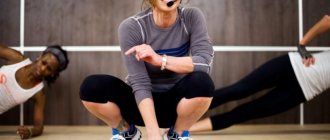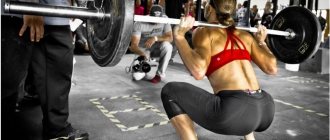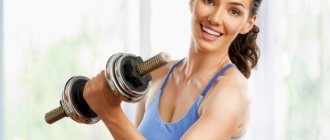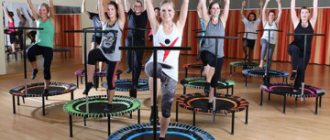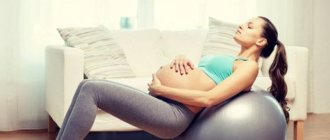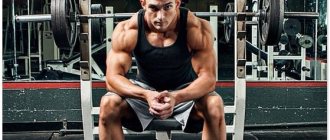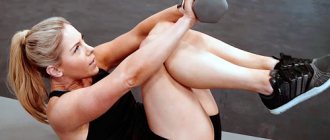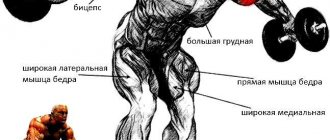It won't be easy: basic rules
1. If you get excited about an idea, try not to quickly lose your enthusiasm.
2. Before you start a set of exercises for stretching the twine at home, you must realize that it is advisable to work every day, or at least 4 times a week. If everything hurts terribly after stretching at home, then take the next day off.
3. Daily training should take at least half an hour, but better - about an hour. Why so much - because you need to spend 15 minutes warming up, unless, of course, you want to tear the ligaments.
4. The more effort you put in, the faster you will get the result.
5. Anyone can do the splits, but the speed depends not only on your efforts, but also on muscle structure, age, genetics, nutrition, etc.
6. If you “chase the splits” there is a huge possibility of injury. Therefore, feel the measure and just do it, sooner or later you will do the splits.
Warm-up exercises:
We won't open the bike. At home, jumping rope, fast squats, running in place and leg swings are suitable for warming up.
Tips on how to do warm-up exercises correctly in this video.
Contraindications and possible harm from exercise
In an ideal world, we would all consult our doctors before undertaking any activity. Stretching is no exception, so an “ok” from the doctor will save you from unnecessary worries. If we talk about common contraindications, twine is not recommended for osteochondrosis, recent fractures, the first trimester of pregnancy and during postoperative recovery. Some cardiovascular diseases are also prohibited.
We've sorted out the contraindications, let's talk about the harm. First of all, it can be caused by improperly performed exercises. Therefore, either carefully select video lessons on YouTube, or sign up for several classes with an experienced trainer. An important point: always start your workout with good stretching, it will minimize pain and prevent possible injuries. The second danger is the desire to do the splits quickly and stretch through tears. The phrase “the slower you go, the further you go,” is best applied to the splits, so be patient, plan frequent workouts and take your time: spectacular photos on social networks can wait.
Basic stretching exercises for beginners
The exercises at this stage should take you 15-20 minutes. Remember that you need to fix the body at each point. At first, 30 seconds is enough, over time increase the fixation to a minute.
№1 Place your feet shoulder-width apart. Bend over and reach your hands to the floor. Fix your body for 30 seconds.
№2 In this position, turn your torso towards your right leg, grab your shin and, as you exhale, stretch down and towards your leg. Lock in this position for 30 seconds.
Repeat the same on your left leg.
№4 Place your feet slightly wider than your shoulders (feet parallel). As you exhale, bend over, bend your elbows and reach towards the floor. Fixation 30 sec.
№5 From this position, turn to the right and place your hands on the floor. Make sure that your knees do not bend and your feet are pressed to the floor (30 sec.).
Further complicate it: take the toe of the foot with your left hand and pull. At this moment the arm is bent at the elbow (30 sec.)
Repeat on your left leg.
№6 From a standing position, with your feet shoulder-width apart, lunge to the side. Place your hands on your hips and push yourself down (30 sec.).
№7 Without changing your position, bend your elbows and place them as close to your legs as possible. Hold for 30 seconds.
№8 In the same position, bend your left leg at the knees, grab your foot with your left hand and pull. Place your right hand on the floor.
Repeat on the other leg.
What should be the diet for coxarthrosis of the hip joints?
For each stage of the development of the disease, one can identify its own characteristic set of symptoms. At the initial stage of development of coxarthrosis, minor transformations occur in the bones. They may not have any effect on the patient’s mobility and ability to work during the day. Discomfort in the hip area during movement is short-term. But this is precisely what will be considered as the initial symptom.
The initial stage is characterized by unpleasant sensations when bending and straightening the knees. This may indicate inflammatory or destructive processes occurring in the bones.
The second stage of the disease is characterized by increased pain, which from irregular becomes more intense and clearly manifests itself at night.
Internal transformations in joints and bones occur more actively. It becomes more and more difficult to perform any physical exercises, walking is difficult, movements become constrained. Since the limb is deprived of the usual load, blood circulation is disrupted, dystrophy is formed and, as a consequence of these processes, a person develops lameness.
Later, as the disease progresses, you may notice a shortening of the affected leg. With coxarthrosis of the 3rd degree, significant bone growths are revealed in the photographs, and expansion of the bone neck is visible. The pain continues day and night, only its frequency and strength varies.
The most severe stage of coxarthrosis occurs with complete immobility of the joints and limbs - degree 4, in which the muscles dry out or completely atrophy, the joints are destroyed and almost absolute immobility occurs.
Often a person does not pay attention to the signals expressed in the early stages and does not go to see a doctor. But treatment of coxarthrosis diagnosed in the initial phase is much easier than in an advanced state. In the case of coxarthrosis of the hip joint, the well-known saying that prevention is easier than treatment turns out to be true.
There is a wide range of prerequisites for the occurrence of the disease. In children, coxarthrosis can develop as a consequence of congenital degenerative changes in the hip joint. In adults, this disease is caused by excess weight, increased stress on the joints, chronic injuries, arthritis, osteoporosis, and heredity.
At different stages of the disease, certain medications are prescribed. Some of them relieve pain, spasms, inflammation, others help preserve or build up joint material. Along with drug treatment, physical therapy (physical therapy) is used for coxarthrosis of the hip joint, and stretching exercises.
Its systematic and correct implementation returns mobility to the joints and gives tone to the muscles, while a weakening of the pain symptom is observed.
We suggest you read: Treatment of arthritis of the knee joint with folk remedies
A set of exercises for coxarthrosis should be developed by the attending physician individually for each patient. In this case, the personal characteristics of the patient are taken into account: the degree of development of the disease, general physical condition and well-being. The effect of medications in the treatment of coxarthrosis of the hip joint can be supplemented not only with physical therapy, but also with special massage. It has a positive effect on overall muscle tone and the condition of blood vessels.
Before you start charging, you should remember some rules:
- the degree of load is prescribed by the doctor and should increase gradually;
- Regular gymnastics is required;
- during exacerbations, all kinds of stress are prohibited;
- physical exercises should be performed calmly, smoothly and measuredly, without sudden movements;
- you should immediately stop exercising if pain symptoms occur while performing any exercises;
- do not experiment, but perform all exercises for coxarthrosis of the hip joints technically correctly, otherwise physical therapy instead of treatment may cause complications.
Osteoarthritis of the knee joint (gonarthrosis) is a disease that is characterized by the destruction of cartilage, changes in the shape of the joint and loss of its functions. Initial changes occur at the molecular level, the cartilage begins to thin, darken and crack. Eventually, the cartilage disappears completely, leaving the leg immobilized.
There are many factors for the development of arthrosis of the knee joint:
- Injury. All kinds of fractures, dislocations, etc. lead to development even at a young age. The damaged joint blocks the ability to bend and straighten the leg. The therapy involves fixing the leg in a stationary position, which significantly impairs blood circulation. As a result, knee joint disease develops.
- Damage to the menisci. With any injury to this organ and when it is removed, gonarthrosis will immediately develop.
- Strong physical activity. Often older people do not understand the severity of their physical activity and try to exercise in the same way as at a young age. But this is fraught with injuries. Even unnoticed and small injuries cause significant harm to the joints. Therefore, any physical activity after 40 years should be moderate. In old age, cartilage is much thinner than in youth, and it cannot withstand heavy physical activity. Running on paved surfaces and squats are especially detrimental to knee joints. Replace these exercises whenever possible.
- Obesity and excess weight. Excess weight in itself cannot in any way affect the health of the joints, but it may well damage the meniscus. Obese people have difficulty withstanding such injuries, and the knee takes a very long time to heal. If you are overweight, the entire load falls on your knees. It is difficult when excess weight is combined with varicose veins. Then the most severe and dangerous form of arthrosis develops.
- Weak ligamentous apparatus. Weakened ligaments are usually associated with joint mobility. At the same time, a person can have a very flexible body and can easily do the splits, for example. Such activity leads to microtraumas of the knee, which will lead to arthrosis.
- Various joint ailments. Arthrosis of the knee joint is often a consequence of arthritis.
- Poor metabolism. This situation contributes to poor tissue production of nutrients. Lack of calcium worsens the condition of the bones and cartilage of the body.
- Stressful situations. Constant nervous tension can adversely affect the joints of the body. Accumulated fatigue should be relieved by rest and a change of environment. This disease mainly affects people over 50 years of age, and mostly women.
Only a specialist can determine that you have started gonarthrosis, but you should contact him if you discover the following symptoms:
- Pain. Pain sensations do not develop at a rapid rate. This disease is usually accompanied by mild pain over many months or years. Further, the pain intensifies and the patient feels it already at rest. The pain is especially noticeable after long walks. You can remove it by resting, but it will appear again as soon as you walk a few more kilometers.
- Knee deformity. At later stages of the development of the disease, the knee takes on a swollen appearance. Its shape is retained.
- Synovitis. The condition when fluid accumulates in the knee is called “Synovitis”. It leads to the formation of a Baker's cyst. This cyst is especially visible when the leg is extended.
- Crunching in the knee. This phenomenon occurs with arthrosis of degrees 2 and 3. The crunch is accompanied by pain.
Degrees of the disease
The progression of deforming arthritis contributes to the destruction of cartilage, so voids form in the tissues, gradually filling the bone tissue. For these reasons, all movements of the patient are accompanied by pain and stiffness.
At an early stage of the disease, pain may intensify and subside or even disappear completely for a while. And in the later stages of development, the pain constantly haunts the patient, not receding even during sleep.
Causes of coxarthrosis:
- metabolic disorder;
- overweight;
- impaired blood circulation;
- high concentration of uric acid in tissues;
- excessive stress on joints;
- unbalanced diet;
- biochemical changes in cartilage.
At an early stage of the disease, the patient should reconsider his diet, as it has a direct impact on his health. First of all, the diet will help normalize weight, due to which the load on the joints will decrease and damaged cartilage will be restored.
https://youtu.be/c3YReT9t3Sk
For normal operation, joints need synovial fluid, which will nourish the joints and protect surrounding tissues from drying out, improving the quality of shock absorption. For these reasons, it is extremely important that the patient’s menu is balanced.
However, you cannot get too carried away with diet therapy, as you can deprive the body of necessary substances. Otherwise, the process of regeneration of cartilage tissue will be slow.
Nutritionists recommend following the principles of fractional nutrition and avoiding one-time consumption of large portions. Therefore, meals should be divided into 5-6 times a day.
Only a doctor can choose the right diet for coxarthrosis. Creating a menu yourself can leave the body without essential fats, microelements and vitamins, which will significantly worsen the patient’s condition.
Diet therapy for deforming arthrosis must necessarily include low-fat varieties of fish and meat. Dishes such as jelly and jellied meat will be especially useful. After all, they contain gelatin - a source of collagen, which promotes rapid restoration of joints.
We suggest you read: In what form to take the drug Voltaren when treating joints
But nutritionists say that it is not the product itself that causes harm, but the method of its processing. Today, meat sold in supermarkets is often loaded with preservatives, which is very harmful to the health of joint tissue. These harmful substances lead to the accumulation of uric acid in the tissues of the body, causing inflammation.
For these reasons, the diet for coxarthrosis excludes:
- eating in fast food restaurants;
- ham, sausage, bacon, etc.;
- smoked meats, since in the production process of this product smokehouses are used less and less and are treated with so-called liquid smoke.
https://youtu.be/dI2cE85Tu8c
Split stretching exercises
№1 Sit on the floor, legs together, grab your feet with your hands and fold (30 sec.).
№2 Sitting on the floor, spread your legs out to the sides as wide as possible. Then stretch your arms forward and press your chest to the floor (30 sec.).
№3 Turn your body to the side, grab your shins and stretch (30 sec.).
№4 From this position, bend sideways to the right. Please note: right shoulder forward, left shoulder back. On the left leg - vice versa.
Repeat exercises No. 3-4 on the other side.
№5 Lie on your back, straighten your legs. Bend one leg and clasp it with your hands, pull it to your chin (30 sec.). Change your leg.
№6 Lying on your back, bend your left leg, grab your right ankle with your hands and pull it towards your shoulder (30 sec.) Then increase the tension: straighten the leg standing on the floor (30 sec.).
№7 Sit in frog pose with your knees on the floor. Then, as you exhale, gently spread your legs. Bend your arms at the elbows and rest (30 sec.). After this, rock back and forth.
№8 This exercise is called cross split. Kneel down, take one leg to the side and press it to the floor (30 sec.) Do the same in the other direction.
№9 Go to the wall and press your hips, do not lift your heels off the floor. Start to slowly move away.
Details on how to do stretching exercises at home are in the video. If someone is too lazy to read, watch it.
